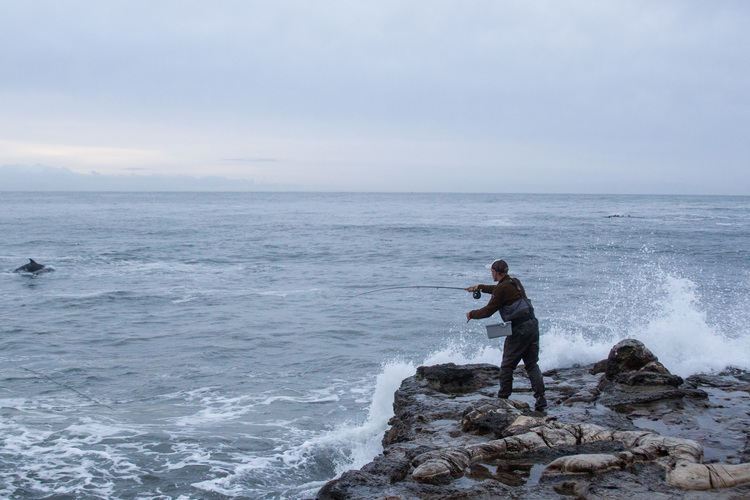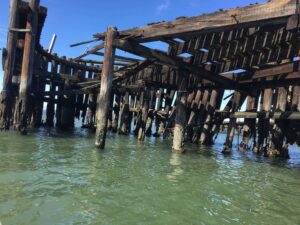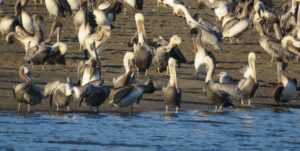Jack Harrison, 26, is a wilderness and fly-fishing guide and the lead survival instructor at Adventure Out outdoor school based in Santa Cruz. We caught up with Jack as he returned from a morning of ocean fishing at Stinson Beach and spoke with him about his wilderness adventures, surviving in the wild, and the importance of learning from nature.
Where did you grow up?
I grew up in Fairfax, at the foot of Mount Tam.
What were your first memories of interacting with nature?
I remember being let free outside and going wandering. I always felt this great sense of wonder. By the time I was eight I was able to set up a camp in the nearby woods by myself.
Who were your greatest influences?
Both of my grandmothers were really, really helpful in keeping me outside. Their whole lives were dedicated to nature. They would always be taking me to the zoo, or on walks with their friend, the famous naturalist Elizabeth Terwilliger. One of my grandmothers always had nature magazines. We’d look through them and go do things. I remember finding fennel plants and making chewing gum out of the pith and the leaves.
Did you go to college?
Yes, but I didn’t go straight to college from high school. The first thing I did was go into the woods. I lived in a cabin with pretty few amenities up in Washington State and studied nature through an independent nature study program run by the Wilderness Awareness School. It was based on the Kamana naturalist training program developed by the naturalist Jon Young.
What subjects did you study there?
Wilderness survival skills and nature education, like tracking, taxonomy, and bird language.
How did your career at Adventure Out begin?
The program was run by Cliff Hodges, who’d been a mentor of mine when I took the SEA-DISC environmental education program while attending Sir Francis Drake High School. Cliff played a unique role in my life. He was a surfer and skateboarder. He was fascinated by nature and lived a lifestyle I appreciated.
After returning from the woods, I started studying at the College of Marin, taking classes in ornithology and also working at a local surf shop, but I just wanted to do something that had to do with survival skills. So I emailed Cliff to see if they needed an intern. He said, “You’re way too qualified.” He invited me to become an instructor. But there were only a few wilderness training programs at the time, so I started some programs at Camp Tamarancho in Marin for them.
What were some of the classes you designed?
The first was tracking. But it was a really general class, and students wanted more. So I wrote up a curriculum for an advanced class. Then I wrote a curriculum for an overnight class. I’ve designed four or five programs altogether.
What is the most popular course you teach at Adventure Out?
It’s the Wilderness Skills and Survival Clinic. I cram as much as possible into that five-hour class. We focus on the basics: shelter, water, fire, food, air – basic human needs. Things we need regardless of the context. We teach students how they can build a shelter in only three hours, within the critical window for survival.
Why the emphasis on shelter?
The number one cause of death in the wild is exposure. If you break your leg and you’re outside freezing in January you’re not going to make it if you can’t create some shelter. Shelter can take a variety of forms, like a down jacket; you can save your life using your own body heat if you can keep the heat from escaping.
What if you’re stranded outside without a source of protection like a down jacket?
The number one rule of survival is to use your own body heat without expending any additional energy. The only realistic shelter [that will keep you alive] is modeled on a squirrel’s or rat’s nest: You make a kind of “mummy bag” out of a huge pile of leaf debris. Using sticks of varying strengths and sizes, you can create a structure that is very close to your body.
Who are your students?
About half of my students spend quite a lot of time outside and go hiking; the other half never go outside. We get a lot of Silicon Valley people who live the way my dad did – commuting every day. They’re tired of sitting all day.
What are the main goals of your survival class?
Getting people connected to nature is my first priority. Nowadays nobody’s connected to anything except their iPhones. Being self-reliant is important, but at the end of the day it’s about being a steward of the earth.
How do you know you’ve succeeded?
It makes me feel good when people just show up for the classes. And getting emails like “You changed my life” are also great. One of my former students wrote to say he used to live in the city, and now he lives in the country and keeps chickens and understands animals’ alarm calls. And the kids: One of my friend’s kids were in a recent class of mine where they caught their first fish – a bluegill.
And I feel like I’m doing something right when people write after the class to volunteer.
What are some of your favorite places in the Bay Area to get outside?
Point Reyes is where I grew up; it’s one of the most special places. The diversity of wildlife and habitats is incredible, because it has less habitat fragmentation. And I love to surf in the Marin Headlands as well as Ocean Beach in San Francisco.
>> Read more: Jack chats about his fly-fishing adventures
>>Learn more about Jack, his classes, and fly-fishing:
- Adventure Out outdoor classes
- Jack’s fishing guide website: Fishtherip.net





